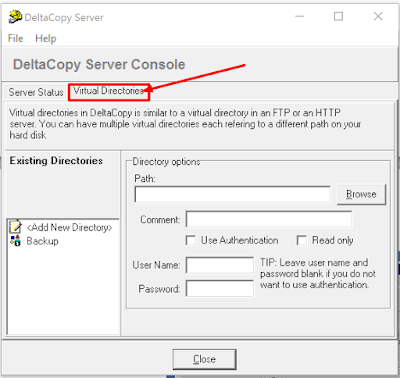The TLS (transport layer security) and its predecessor
SSL( secure sockets layer) are the secure
protocols created in order to place normal traffic in a protected, encrypted
wrapper.
These protocols allow traffic to be sent safely between
remote parties with secure data transfer
where data is being intercepted
and read by someone else in the middle.
In this guide, will learn how to create a self-signed SSL
certificate for Apache on an Ubuntu 14.04 server. Which will allow you to encrypt traffic from your
server to client. While this does not provide the benefit of third party
validation of your server's identity, it only full fills the requirements of
those simply wanting to transfer information securely to the client.
Prerequisites
1. Update the Linux system
# yum update
2. Install the packages using this command for ssl and htpps
# yum install httpd
# yum install
mod_ssl openssl
Activate the SSL Module
3. Create a file using vi or your
favourite editor for creating SSL
certificates for your server
# vi /usr/local/bin/apache_ssl
The contents of the files are given below
#!/bin/bash
mkdir /etc/httpd/ssl
cd /etc/httpd/ssl
echo -e "Enter your virtual host FQDN: \nThis will
generate the default name for Apache SSL Certificate and Key!"
read cert
openssl genpkey -algorithm
RSA -pkeyopt rsa_keygen_bits:2048
-out $cert.key
chmod 600 $cert.key
openssl req -new -key $cert.key
-out $cert.csr
openssl x509 -req -days 365 -in $cert.csr -signkey $cert.key
-out $cert.crt
echo -e " The Certificate and Key for $cert has been
generated!\nPlease link it to Apache SSL available website!"
ls -all /etc/httpd/ssl
exit 0
4. Change the permission of the file so that we can execute the as
a command
# chmod +x
/usr/local/bin/apache_ssl
Create a Self-Signed SSL
Certificate
5. Run the apache_ssl file to generate the certificate files fo SSL using OpenSSL below is the
sample screen where we needed to give input for some fields
# apache_ssl
mkdir:
cannot create directory `/etc/httpd/ssl': File exists
Enter
your virtual host FQDN:
This
will generate the default name for Apache SSL Certificate and Key!
hanuman
.........................................................................................................................
...............................................+++
.........................................................................................................................
...................................................................+++
You
are about to be asked to enter information that will be incorporated
into your
certificate
request.
What
you are about to enter is what is called a Distinguished Name or a DN.
There
are quite a few fields but you can leave some blank
For
some fields there will be a default value,
If
you enter '.', the field will be left blank.
-----
Country
Name (2 letter code) [XX]:IN
State
or Province Name (full name) []:TELENGANA
Locality
Name (eg, city) [Default City]:HYDERABAD
Organization
Name (eg, company) [Default Company Ltd]:HANUMAN.COM
Organizational
Unit Name (eg, section) []:HELPDESK
Common
Name (eg, your name or your server's hostname) []:HELPDESK
Email
Address []:XYZ@XYZ.COM
Please
enter the following 'extra' attributes
to be
sent with your certificate request
A
challenge password []:
An
optional company name []:
Signature
ok
subject=/C=IN/ST=TELENGANA/L=HYDERABAD/O=HANUMAN.COM/OU=HELPDESK/CN=HELPDESK/emailAddress=XYZ@XYZ.COM
Getting
Private key
The
Certificate and Key for hanuman has
been generated!
Please
link it to Apache SSL available website!
total 32
drwxr-xr-x.
2 root root 4096 Dec 23 13:53.
drwxr-xr-x.
5 root root 4096 Dec 17 16:28..
-rw-r--r--.
1 root root 1306 Dec 23 13:53 hanuman.crt
-rw-r--r--.
1 root root 1058 Dec 23 13:53 hanuman.csr
-rw-------.
1 root root 1708 Dec 23 13:52 hanuman.key
Configure Apache to Use SSL
6. We needed to edit the configuration file so
that we can use SSL certificates which are generated just now
# vi /etc/httpd/conf/httpd.conf
Add the following to the file in SSL section
SSLCertificateFile
/etc/httpd/ssl/hanuman.crt
SSLCertificateKeyFile
/etc/httpd/ssl/hanuman.key
To Redirect http to https 80
- 443
Add the following to the file in Virtual Host Section
<VirtualHost *:80>
ServerName localhost servername ipaddress
Redirect / https://ipaddress/
</VirtualHost>
#
Service httpd restart
Check you website with http://your-ip-address it will redirect to https://your-ip-address
Keywords: Apache, HTTPS, Redirection, SSL, OpenSSL, Apache, Centos 6.7


Comments
Post a Comment